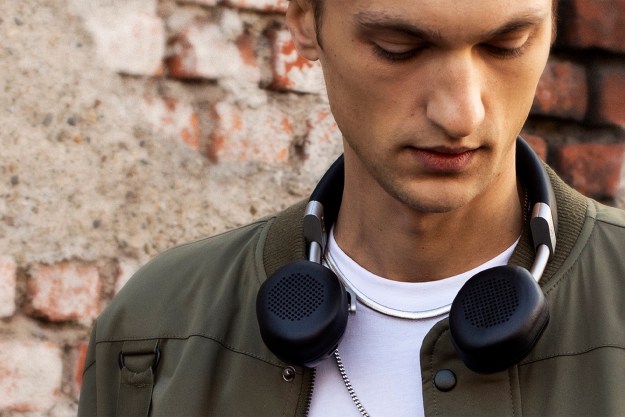
There are now several excellent fully wireless earbuds on the market, but there are several reasons we still prefer and recommend banded Bluetooth in-ear headphone.
For one thing, banded
That’s all about to change.
Today, Qualcomm announced its new QCC3026 headphone chip, a flash-programmable Bluetooth Audio System-on-Chip (SoC) that was purpose-built to take fully
Put simply, if you took a set of last-gen fully

“[A battery increase like this] is pretty unheard of,” said Anthony Murray, Qualcomm’s senior vice president of voice and music, in an interview with Digital Trends. “Normally with generational steps, you may have a five to ten percent savings, but it’s really a radical reduction.”
In addition to the massive battery savings, the new chip will offer manufacturers dedicated components for active noise cancellation and hearing augmentation, meaning that augmented reality applications will be much more realistic without huge sacrifices to listening time. The QCC3026 is also faster than previous chips, which will allow for more efficient processing of heart rate and step sensors, as well as increased digital signal processing capabilities for better sound.
They’ve also made it much easier to use voice assistants hands-free.
“Normally with generational steps, you may have a five to ten percent savings, but it’s really a radical reduction.”
“Another key block we decided to add is based on the whole emergence of products like Amazon Echo and the Google Home product — these smart assistants,” says Murray, “On the current generation products you can push a button on a headset and talk to your favorite assistant, but this new chip has what we call ‘always-on voice’. That means if you want to initiate a session with the cloud assistant you don’t need to push a button, you just say, ‘Alexa’ or ‘OK Google’ or whatever your assistant is.”
The company hopes that increased processing power will also allow for various machine learning techniques — whether that’s allowing the headphones to help hearing impaired people focus in on one particular voice in a crowd, or to customize sound profiles based on an individual’s specific hearing.
The announcement of this better, more affordable chip comes with some other very interesting news: Cell phone maker Oppo has announced it will offer a set of fully

“Because of all the optimizations we’ve made with the new QCC 3026, they are able to get all the superior audio performance, benefit from the significant power reductions,” said Murray, “This actually allows them to consider bundling [fully
Whether or not other premium phone manufacturers — especially those making jackless phones — will follow Oppo’s lead and bundle headphones in-box, the technological leap being offered by Qualcomm’s new chip should mean many more exciting products will hit the market in the next two years.
Come 2020, consumers may have no reason to purchase a set of banded wireless in-ears apart from nostalgia.
Editors' Recommendations
- Qualcomm’s new Wi-Fi chips are poised to revolutionize wireless audio
- Niche Canadian company takes on Sony with new wireless earbuds and headphones
- 3 trends that will make wireless audio even better in 2023
- MQair is the new hi-res Bluetooth audio codec for fans of MQA
- Adidas gives its wireless on-ear workout headphones a solar-powered boost




